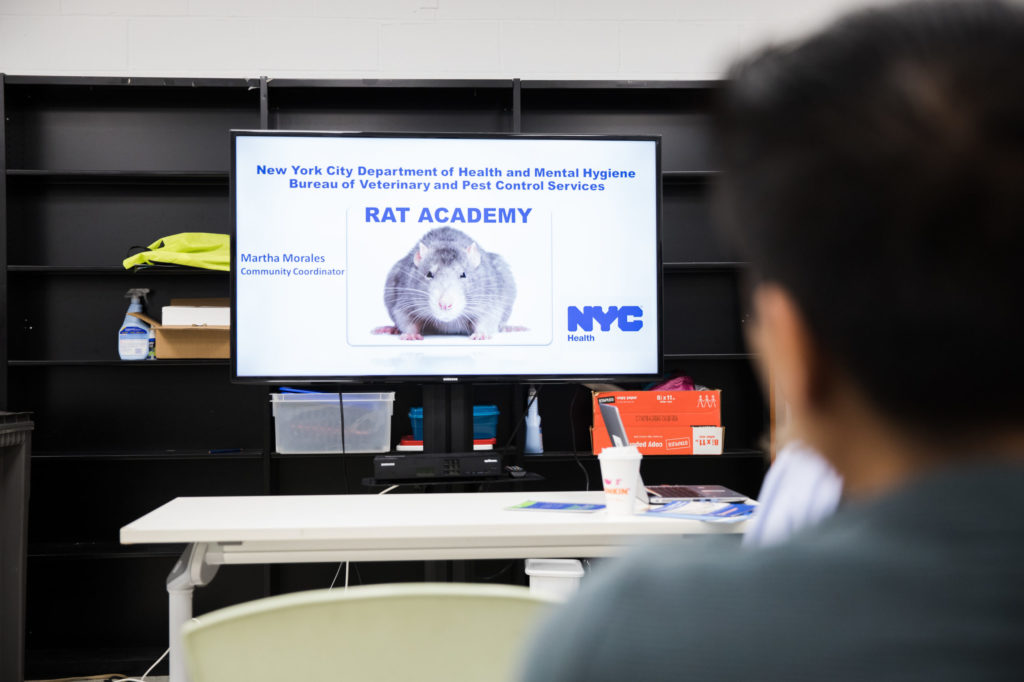Rat problem? Here are some ways to kick them to the curb.

The New York City Department of Health and Mental Hygiene holds a community rat prevention training, or rat academy, at the Marcy Branch of Brooklyn Public Library on Feb. 20, 2020. Photo: Paul Frangipane/Brooklyn Eagle
Rats are smart, not lazy, are perpetually gnawing and communicate with their excrement. These are some of the rodent facts taught at citywide rat academies that have the goal of educating communities on how to identify and prevent rat problems.
In a community room of the Marcy Library in Bedford-Stuyvesant Thursday night, about two dozen people came ready to study up.
Rat academies run by the city Department of Health and Mental Hygiene started in 2016 as part of an initiative by the mayor’s office to reduce the city’s rat population. In 2017, the city vowed to target three areas in the city with high rat concentrations, including parts of Bedford-Stuyvesant and Bushwick.
